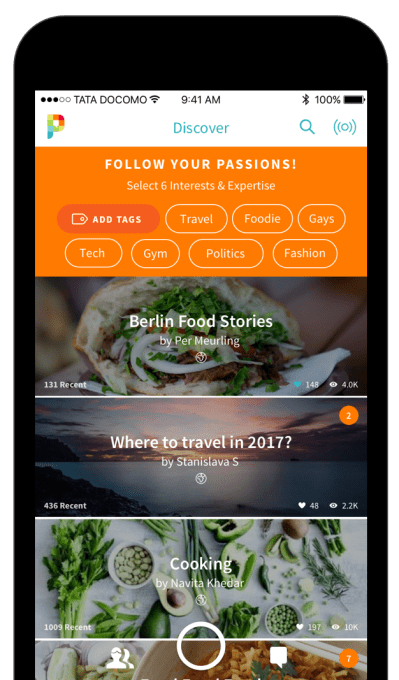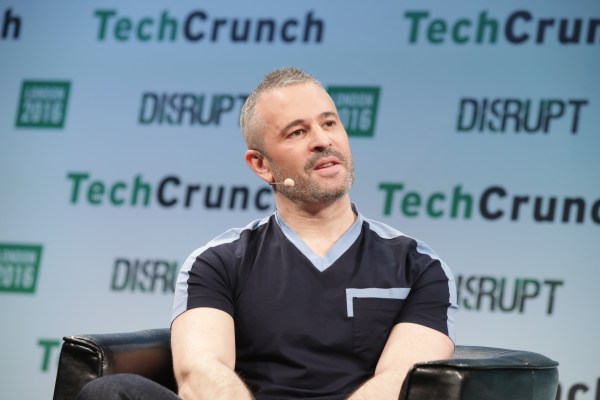Jason Goldberg — a founder that may be as well known for his high-profile startups (Fab.com, Fabulis, Jobster) as his failures and pivots (Hem, Fab.com, Fabulis, Jobster) — earlier this year stepped up to the batting plate once again with Pepo, a group social messaging app that lets you post, read and interact with content based on specific interests. Today, he’s announcing that Pepo has raised money — a $2.35 million seed round.
If you think that failed startups inevitably leave a bad taste in investors’ mouths, Goldberg’s story should give you something to chew on.
Pepo is bringing Goldberg together with some of the same backers who put some $300 million into his previous startup, the design marketplace Fab.com (before it was sold to PCH in a firesale). Pepo’s seed round was led by Tencent, with Greycroft, Vectr, Correlation, as well as Goldberg himself also participating. Specific previous Fab.com investors and board members that are now putting money into Pepo include James Mitchell of Tencent, Geoff Prentice of Oriente, (previously Atomico), Allen Morgan, David Bohnett, Howard Morgan, and Nishith Shah. In all, 7 of the 10 board members of Fab.com are now involved in Pepo, Goldberg said in an interview with TechCrunch last week.
These investors were not only interested in once more backing and working with Goldberg and his team (the same team who worked with him on Fab.com, Jobster and a previous startup, Socialmedian), but they actually wanted to give him more than he raised in the end.
“We had several offers to raise larger rounds, but we wanted to take it slow,” said Goldberg — who is speaking on stage today at TechCrunch Disrupt in London. The app was first announced back in February, and between then and now, Goldberg had been self-funding it, he added.
Why, exactly, would investors put money into a startup from a founder who had burned through $300 million in his last outing? One reason could be Goldberg’s response to adversity. He’s often been very frank and open about what he and his startups have done wrong.
 The other notable point is that Fab.com — a design marketplace with a social twist — was a completely different business area from his new endeavor, a social network with little in the way of e-commerce (at least for now).
The other notable point is that Fab.com — a design marketplace with a social twist — was a completely different business area from his new endeavor, a social network with little in the way of e-commerce (at least for now).
And the third could be that Pepo, at least in its early days, seems to be doing modestly well.
Even with little marketing effort. Goldberg tells me that among them, “Cooking” has had 12,000 views, “food food food” has had 4,000 views, and “Global Gay Travelers” has had 18,000 views. He says that of all of its new users, 50% are coming back each week, engagement that he believes is more important than having a large volume of downloads (which often don’t have a direct correlation with sustained interest).
As it looks today, Pepo is divided into several categories, some of which have been created by Pepo, and some of which have been set by users.
They cover subjects as diverse as travel sites, hotel gyms (created by Jason), cooking and foodie subjects, fashion and tech. Inside each of those are a Pinterest-style stream of pictures and videos and links related to the category, which users can respond to with positive notes or icons, or ask questions.
The app itself is still in what I’d call an early state: the cooking category, for example, has a lot of snaps of people’s dishes, but very little in the way of recipes or techniques, or tools to give content posters the ability to add these in easily.
And apart from there being a lot of competition from the likes of Pinterest, Facebook and Instagram, and a track record of challenges for others trying to build communications for specific groups (Snapguide’s demise being just one example), Goldberg describes Pepo as a “passion project”, which is as good a reason as any to try your hand at something new.
Indeed, Goldberg has something of a natural touch when it comes to being human about tech challenges and also opportunities. Asked about how he decided to build Pepo, he says it came out of his search for an answer to a little question of his own — how to find his favorite snack.
“The idea for Pepo was derived from my own experience trying to pursue one of my passions: avocado toast,” he said in an email to me. “Last Christmas, my husband and I were walking around Sydney and we had a craving for avocado toast. We searched Google and weren’t satisfied with the static results. We posted a question on Facebook but our post got lost in the stream and didn’t reach anyone who was in-the-know. It hit me that it should be possible to instantly connect with and message with other avocado toast enthusiasts around the world, instantly, via a messaging platform that connects friends, friends of friends, people nearby, people with unique passions and expertise, indelible, always searchable — and that avocado toast was just one of gazillions of use cases for such a service.”
